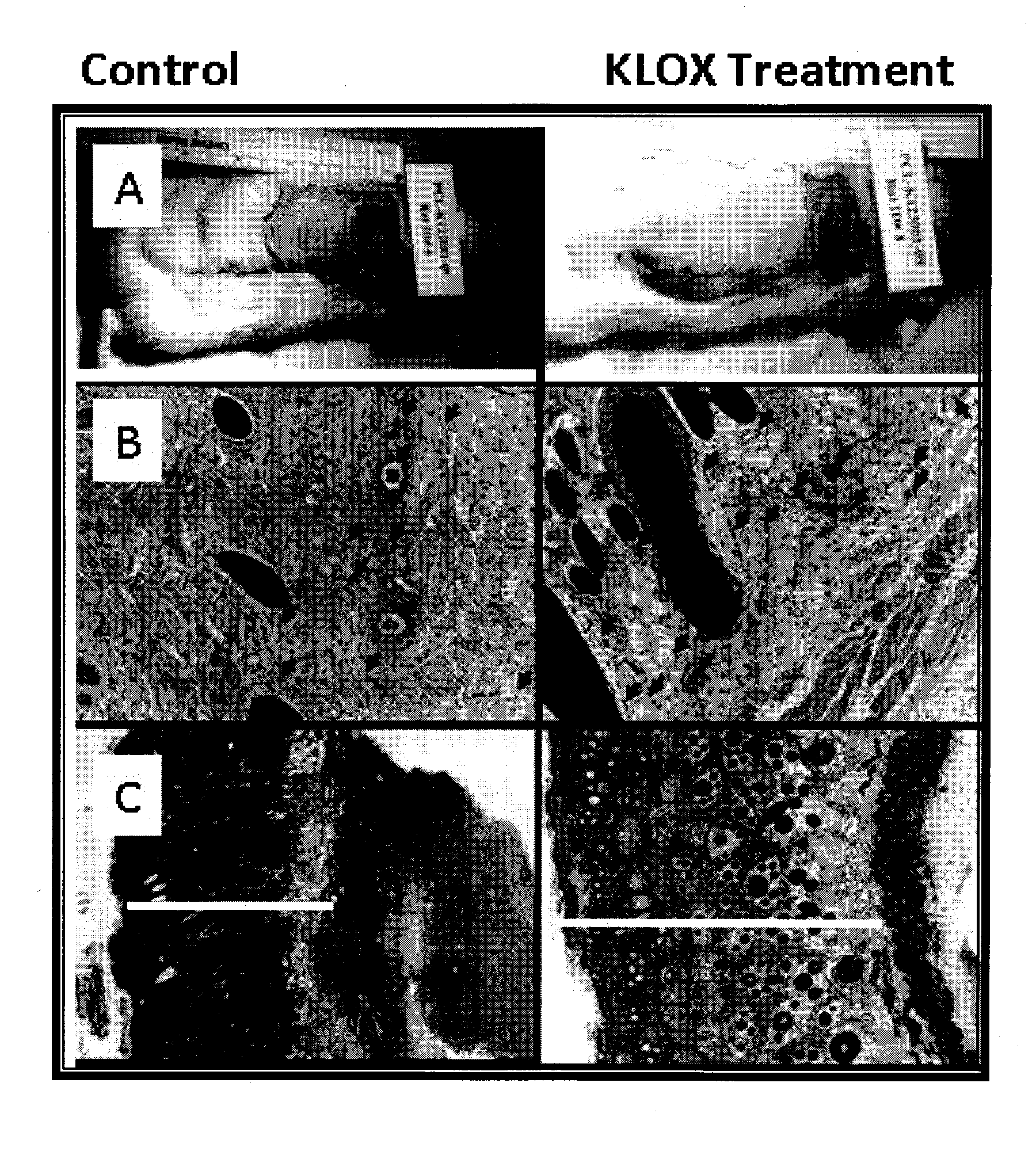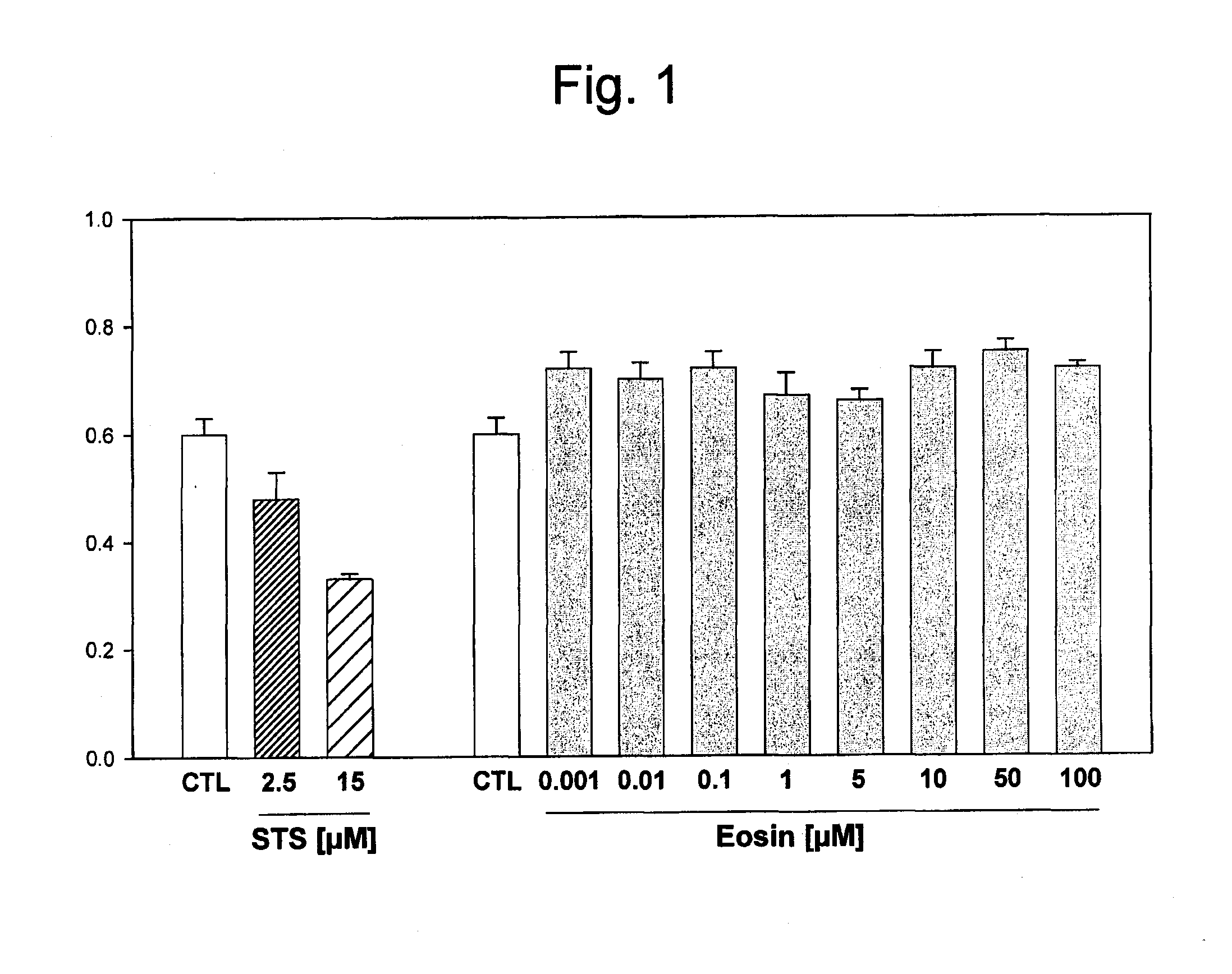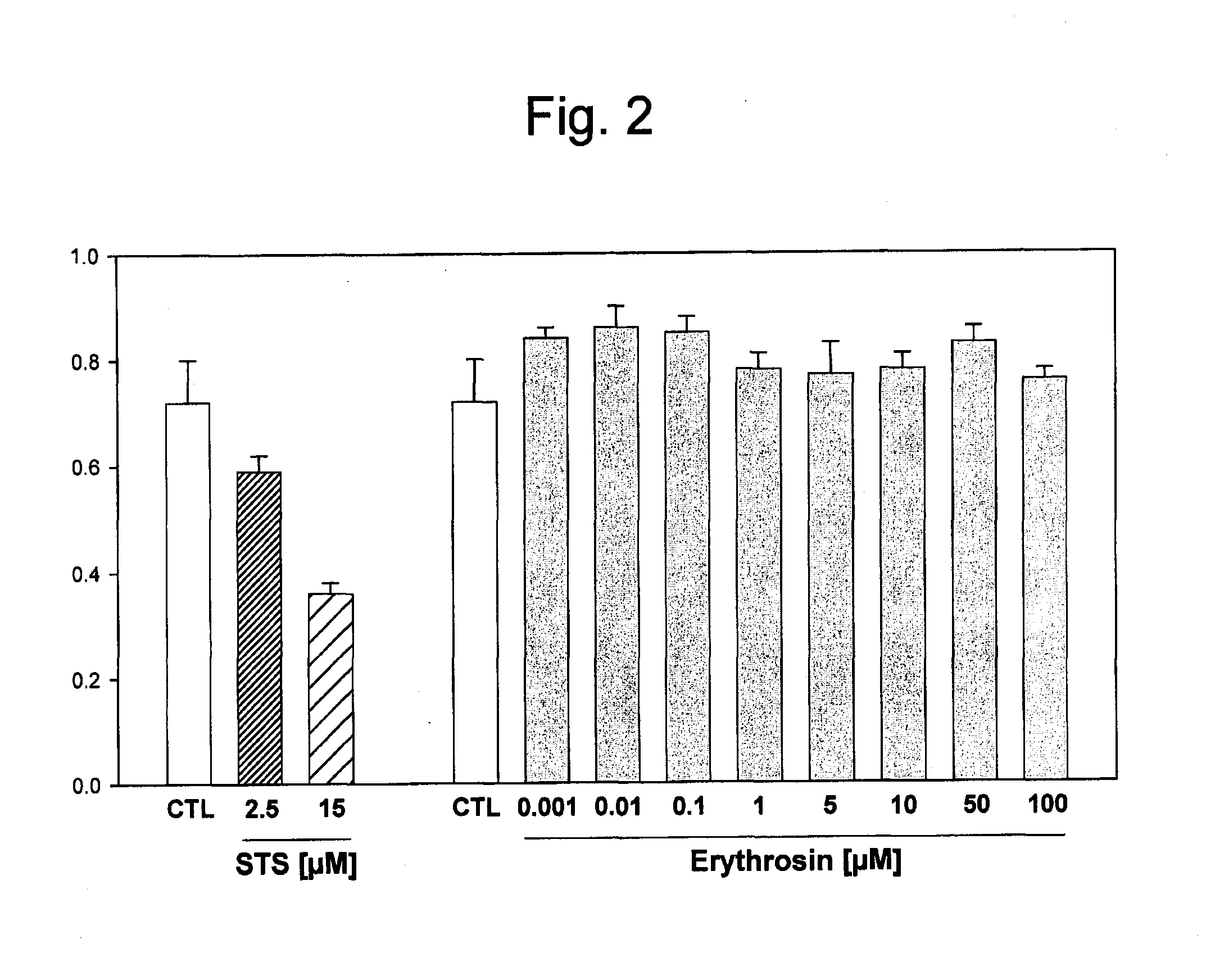Combination of an oxidant and a photoactivator for the healing of wounds
a photoactivator and oxidant technology, applied in the field of wound healing compositions, can solve the problems of direct stimulation of wound repair, delayed wound healing, and significant clinical problems, and achieve the effects of enhancing or activating the oxidant present in the reaction mixture, and enhancing or accelerating the dispersion of ligh
- Summary
- Abstract
- Description
- Claims
- Application Information
AI Technical Summary
Benefits of technology
Problems solved by technology
Method used
Image
Examples
example i
[0115]An exemplary wound healing composition was prepared by mixing the following components:
OxidantPhotoactivatorsHealing factor(s)Carbamide Erythrosine B (0.5%)Glucosamine sulfate (3%)peroxide (16%)Eosin B (0.25%)Hyaluronic acid (3%)Saffron Red powder (0.25%)
[0116]The oxidant (4 mL) and healing factors (1.5 mL) were mixed and the combined with the photoactivators (1 mL). The resulting composition was applied to the skin of a wounded patient, and activated with actinic light provided by a LED photocuring device (blue light). The composition was removed following treatment.
example ii
[0117]An second exemplary wound healing composition was prepared by mixing the following components:
OxidantPhotoactivatorsHealing factor(s)Carbamide FluoresceinGlucosamine sulfate (3%)peroxide (16%)Indocyanin greenHyaluronic acid (3%)Saffron Red powder (0.25%)
[0118]The oxidant (4 mL) and healing factors (1.5 mL) were mixed and the combined with the photoactivators (1 mL). The resulting composition was applied to the skin of a wounded patient, and activated with actinic light provided by a LED photocuring device (blue light). The composition was removed following treatment.
[0119]This second exemplary composition is using the fluorescein dye as a photoactivator to other dyes (indocyanine green and saffron red powder) present in the composition. The addition of a small amount of fluorescein to the indocyanine green and saffron red powder solution caused reemission of light at wavelengths that activated the other dye compounds and improved the treatment by increasing the established cli...
example iii
[0121]The toxicity of the photoactivators Eosin Y and Erythrosine B was evaluated by measuring the cytotoxicity of these compounds on human cells. Hep G2 human hepatocellular carcinoma cells with an epithelial morphology were treated for 24 hours with increasing concentrations (0.001 to 100 μM) of Eosin Y or Erythrosine B, and the cellular survival was evaluated. Increasing concentrations of either Eosin Y (FIG. 1) or Erythrosine B (FIG. 2) did not affect cellular viability when compared to untreated cells. Staurosporine (STS) was used as a positive control for inducing cellular mortality and caused a dose-dependent effect (FIGS. 1 and 2). Similar results were obtained by measuring cell death by release of lactate dehydrogenase (LDH). Therefore, neither Eosin Y or Erythrosine B caused increased cellular mortality.
PUM
| Property | Measurement | Unit |
|---|---|---|
| wavelength | aaaaa | aaaaa |
| wavelength | aaaaa | aaaaa |
| specific photon wavelength | aaaaa | aaaaa |
Abstract
Description
Claims
Application Information
 Login to View More
Login to View More - R&D
- Intellectual Property
- Life Sciences
- Materials
- Tech Scout
- Unparalleled Data Quality
- Higher Quality Content
- 60% Fewer Hallucinations
Browse by: Latest US Patents, China's latest patents, Technical Efficacy Thesaurus, Application Domain, Technology Topic, Popular Technical Reports.
© 2025 PatSnap. All rights reserved.Legal|Privacy policy|Modern Slavery Act Transparency Statement|Sitemap|About US| Contact US: help@patsnap.com



